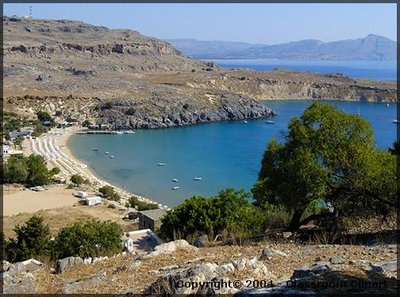Island
|
|
An island is any piece of land smaller than a continent and larger than a rock, that is completely surrounded by water. Very small islands are called islets. Although seldom adhered to, it is also proper to call an emergent land feature on an atoll an islet, since an atoll is a type of island. A key or cay is also another name for a relatively small island. Groups of related islands are called archipelagos.
There are three main types of islands: continental islands, river islands, and volcanic islands. There are also some artificial islands.
The word island derives ultimately from the Norse word igland. It was originally spelled phonetically: iland. The letter "s" was added to attempt to link it to the Latin insula (which is not etymologically related), Latin being considered a more prestigious language at the time.
| Contents |
Continental islands
Continental islands are bodies of land that are connected by the continental shelf to a continent. That is, these islands are part of an adjacent continent and are located on the continental shelf of that continent. Examples include Greenland and Sable Island off North America, Barbados and Trinidad off South America, Sicily off Europe, Sumatra and Java off Asia, Papua and Tasmania off Australia.
A special type of continental island is the microcontinental island, which results when a continent is rifted. The best example is Madagascar off Africa. The Kerguelen Islands and some of the Seychelles are also examples.
Another subtype is the barrier island: accumulations of sand on the continental shelf.
River islands
River islands occur in river deltas and in large rivers. They are caused by deposition of sediment at points in the flow where the current loses some of its carrying capacity. In essence, they are river bars, isolated in the stream. While some are ephemeral, and may disappear if the river's water volume or speed changes, others are stable and long-lived.
Volcanic islands
Volcanic islands are built by volcanoes. Mid-ocean examples are not geologically part of any continent. One type of volcanic island is found in a volcanic island arc. These islands arise from volcanoes where the subduction of one plate under another is occurring. Examples include the Mariana Islands, the Aleutian Islands, and most of Tonga in the Pacific Ocean. Some of the Lesser Antilles and the South Sandwich Islands are the only Atlantic Ocean examples.
Another type of volcanic island occurs where an oceanic rift reaches the surface. There are two examples: Iceland, which is the world's largest volcanic island, and Jan Mayen—both are in the Atlantic.
The last type of volcanic island are those formed over volcanic hot spots. A hot spot is more or less stationary relative to the moving tectonic plate above it, so a chain of islands results as the plate drifts. Over long periods of time, this type of island is eventually eroded down and "drowned" by isostatic adjustment, becoming a seamount. Plate movement across a hot-spot produces a line of islands oriented in the direction of the plate movement. An example is the Hawaiian Islands, from Hawaii to Kure, which then extends beneath the sea surface in a more northerly direction as the Emperor Seamounts. Another chain with similar orientation is the Tuamotu Archipelago; its older, northerly trend is the Line Islands. The southernmost chain is the Austral Islands, with its northerly trending part the atolls in the nation of Tuvalu. Tristan da Cunha is an example of a hotspot volcano in the Atlantic Ocean.
An atoll is an island formed from a coral reef that has grown on an eroded and submerged volcanic island. The reef rises above the surface of the water and forms a new island. Atolls are typically ring-shaped with a central, shallow lagoon. Examples include the Maldives in the Indian Ocean and Bora Bora in the Pacific.

